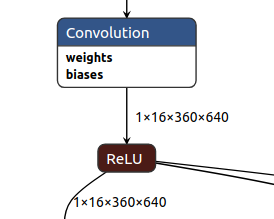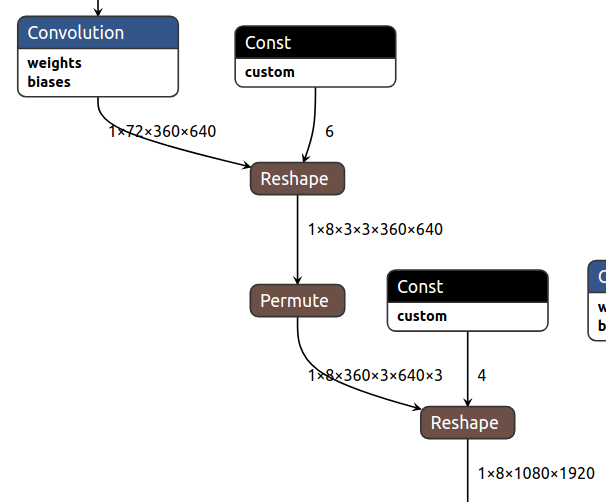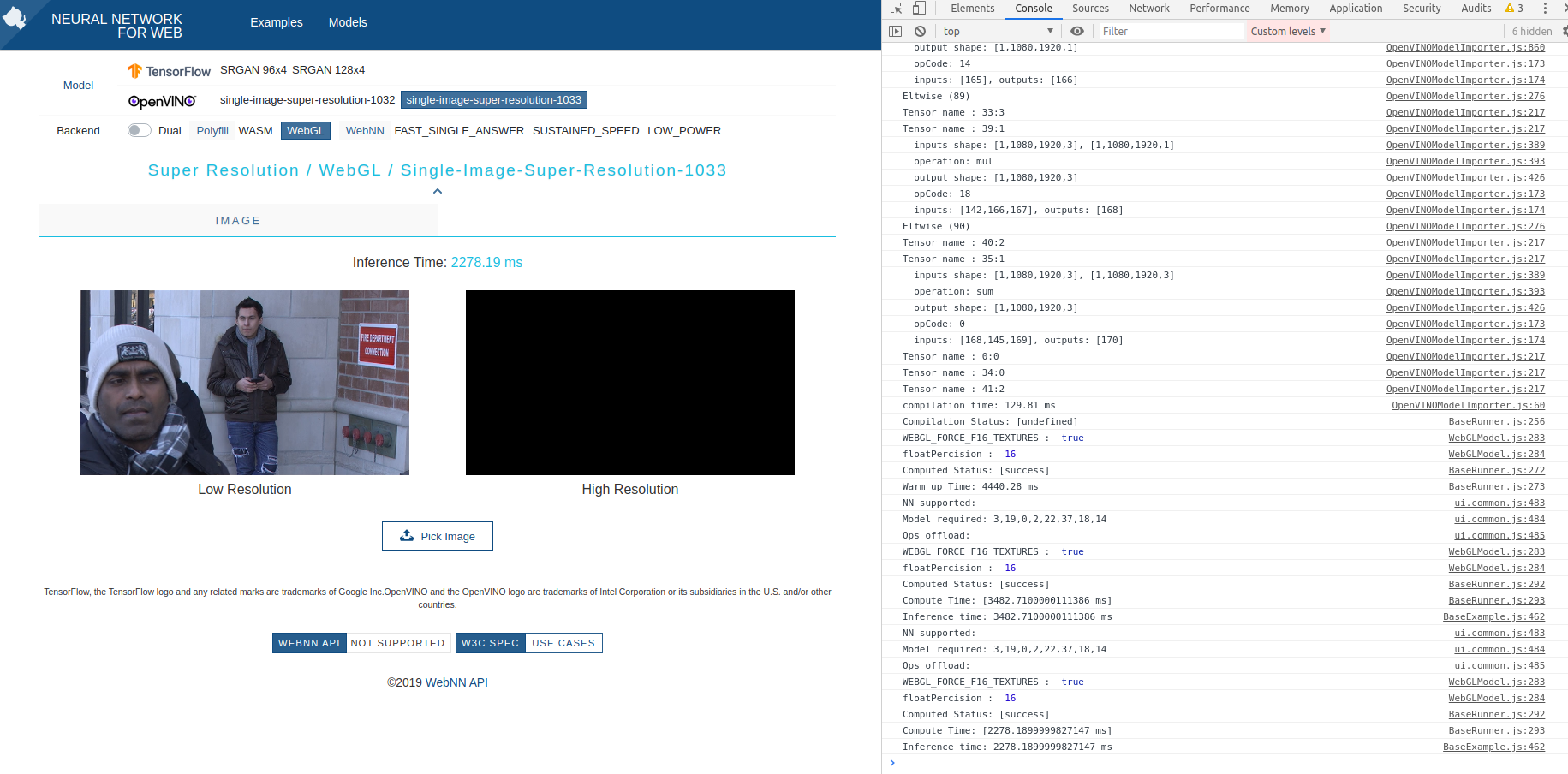I fixed the problem that relu with multiple outputs may caused the following ops can't find corresponding input tensor. Relu needs to be executed seperately and there are continuous relu in this model.
 Besides , there are 6D tensors in this model I can not find a clear format description for 6D tensor.
Besides , there are 6D tensors in this model I can not find a clear format description for 6D tensor.
 And I can just run the model in polyfill but cann't get right result due to these tensors.
And I can just run the model in polyfill but cann't get right result due to these tensors.
 Do you have any suggestions on dealing with 6D tensor permute, and data reorder ?
Do you have any suggestions on dealing with 6D tensor permute, and data reorder ?
Add new super-resolution model from openvino. Here is the corresponding information of the model :
I tried to run these two models in polyfill, but I encountered the following problems during the model compilation stage:
The reason is that the Tensor corresponding to the input cannot be found in the .bin file when analysing the eltwise operation . This problem can be reproduced in this repo. I only made small changes to
OpenVINOModelImporter.jsand the problem seems to be in the weight file or whenOpenVINOModelImporter.jscalling the_addTensorOperandsfunction the corresponding Tensor was not resolved . Currently I can't locate the problem. I encountered this error in eltwise operation in both models,corresponding to the operation of name = "39" and the operation of name = "37" respectively.